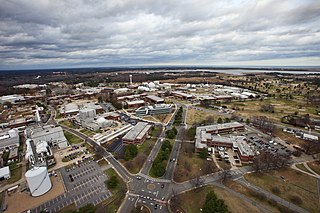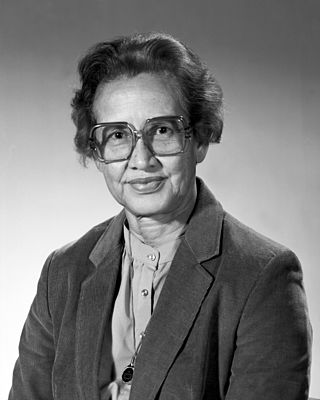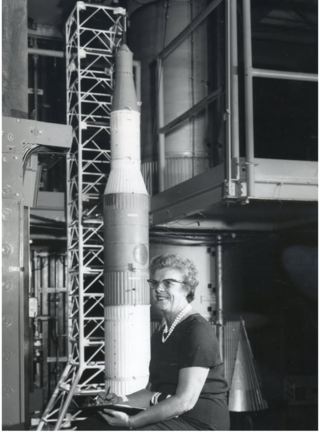
The Langley Research Center, located in Hampton, Virginia near the Chesapeake Bay front of Langley Air Force Base, is the oldest of NASA's field centers. LaRC has focused primarily on aeronautical research but has also tested space hardware such as the Apollo Lunar Module. In addition, many of the earliest high-profile space missions were planned and designed on-site. Langley was also considered a potential site for NASA's Manned Spacecraft Center prior to the eventual selection of Houston, Texas.

Annie Easley was an African American computer scientist and accomplished mathematician who made critical contributions to NASA's rocket systems and energy technologies over her 34-year career. As a black female in America during the 1950s, she faced heavy adversity throughout her career and was often underrepresented and disregarded. Despite these barriers Easley demonstrated perseverance and determination to make a name for herself in a line of work dominated by males. She demonstrated exceptional skills in mathematics, data analysis, and code development across projects focused on alternative energy sources, improved power systems, and launch capabilities enabling space communication and exploration.

The term "computer", in use from the early 17th century, meant "one who computes": a person performing mathematical calculations, before electronic computers became commercially available. Alan Turing described the "human computer" as someone who is "supposed to be following fixed rules; he has no authority to deviate from them in any detail." Teams of people, often women from the late nineteenth century onwards, were used to undertake long and often tedious calculations; the work was divided so that this could be done in parallel. The same calculations were frequently performed independently by separate teams to check the correctness of the results.

Amelia Reid was a mathematician, pilot, flight instructor, businesswoman, airshow performer, and airport advocate. She was the founder of Amelia Reid Aviation and is known as California's First Lady of Aviation.

Creola Katherine Johnson was an American mathematician whose calculations of orbital mechanics as a NASA employee were critical to the success of the first and subsequent U.S. crewed spaceflights. During her 33-year career at NASA and its predecessor, she earned a reputation for mastering complex manual calculations and helped pioneer the use of computers to perform the tasks. The space agency noted her "historical role as one of the first African-American women to work as a NASA scientist".

Christine Darden is an American mathematician, data analyst, and aeronautical engineer who devoted much of her 40-year career in aerodynamics at NASA to researching supersonic flight and sonic booms. She had an M.S. in mathematics and had been teaching at Virginia State University before starting to work at the Langley Research Center in 1967. She earned a Ph.D. in engineering at George Washington University in 1983 and has published numerous articles in her field. She was the first African-American woman at NASA's Langley Research Center to be promoted to the Senior Executive Service, the top rank in the federal civil service.
African-American women in computer science were among early pioneers in computing in the United States, and there are notable African-American women working in computer science.
The role of women in and affiliated with NASA has varied over time. As early as 1922 women were working as physicists and in other technical positions.[1] Throughout the 1930s to the present, more women joined the NASA teams not only at Langley Memorial, but at the Jet Propulsion Laboratory, the Glenn Research Center, and other numerous NASA sites throughout the United States.[2] As the space program has grown, women have advanced into many roles, including astronauts.
The West Computers were the African American, female mathematicians who worked as human computers at the Langley Research Center of NACA from 1943 through 1958. These women were a subset of the hundreds of female mathematicians who began careers in aeronautical research during World War II. To offset the loss of manpower as men joined the war effort, many U.S. organizations began hiring, and actively recruiting, more women and minorities during the 1940s. In 1935, the Langley Research Center had five female human computers on staff. By 1946, the Langley Research Center had recruited about 400 female human computers.

Dorothy Jean Johnson Vaughan was an American mathematician and human computer who worked for the National Advisory Committee for Aeronautics (NACA), and NASA, at Langley Research Center in Hampton, Virginia. In 1949, she became acting supervisor of the West Area Computers, the first African-American woman to receive a promotion and supervise a group of staff at the center.

Hidden Figures is a 2016 American biographical drama film directed by Theodore Melfi and written by Melfi and Allison Schroeder. It is loosely based on the 2016 non-fiction book of the same name by Margot Lee Shetterly about three female African-American mathematicians: Katherine Goble Johnson, Dorothy Vaughan, and Mary Jackson, who worked at NASA during the Space Race. Other stars include Kevin Costner, Kirsten Dunst, Jim Parsons, Mahershala Ali, Aldis Hodge, and Glen Powell.

Margot Lee Shetterly is an American nonfiction writer who has also worked in investment banking and media startups. Her first book, Hidden Figures: The American Dream and the Untold Story of the Black Women Who Helped Win the Space Race (2016), is about African-American women mathematicians working at NASA who were instrumental to the success of the United States space program. She sold the movie rights while still working on the book, and it was adapted as a feature film of the same name, Hidden Figures (2016). For several years Shetterly and her husband lived and worked in Mexico, where they founded and published Inside Mexico, a magazine directed to English-speaking readers.

Mary Jackson was an American mathematician and aerospace engineer at the National Advisory Committee for Aeronautics (NACA), which in 1958 was succeeded by the National Aeronautics and Space Administration (NASA). She worked at Langley Research Center in Hampton, Virginia, for most of her career. She started as a computer at the segregated West Area Computing division in 1951. In 1958, after taking engineering classes, she became NASA's first black female engineer.

Hidden Figures: The American Dream and the Untold Story of the Black Women Who Helped Win the Space Race is a 2016 nonfiction book written by Margot Lee Shetterly. Shetterly started working on the book in 2010. The book takes place from the 1930s through the 1960s, depicting the particular barriers for Black women in science during this time, thereby providing a lesser-known history of NASA. The biographical text follows the lives of Katherine Johnson, Dorothy Vaughan, and Mary Jackson, three mathematicians who worked as computers at NACA and NASA, during the space race. They overcame discrimination there, as women and as African Americans. Also featured is Christine Darden, who was the first African-American woman to be promoted into the Senior Executive Service for her work in researching supersonic flight and sonic booms.

Dorothy Estheryne McFadden Hoover was an American physicist and mathematician. Hoover was a pioneer in the early days of NASA. Originally one of the first black women hired at Langley as a human computer, Hoover would eventually become a published physicist and mathematician. Hoover is one of the first black women to be listed as a co-author on NASA research publications. Her research supported the development of America's first jet fighter, the Sabre. Hoover's accomplishments were featured in Margot Lee Shetterly's bestselling book, Hidden Figures.

Virginia Layden Tucker was an American mathematician whose work at the National Advisory Committee for Aeronautics (NACA), the precursor to NASA, allowed engineers to design and improve upon airplanes. Tucker was one of the first human computers at the NACA, served as a recruiter for the program, and later worked as an aerodynamicist and an advocate for women in mathematics.
Bonnie Kathaleen Land was a computer and mathematician at NASA's Langley facility. The 2016 movie Hidden Figures, which brought awareness to this early success within the NASA space program, was written by Land's former Sunday school student, and Land served as one of the first interviewees during research for the novel. Land was called the "inspiration behind, catalyst for, and gateway to" the creation of Hidden Figures.

Vera Huckel (1908–1999) was an American mathematician and aerospace engineer and one of the first female "computers" at NACA, now NASA, where she mainly worked in the Dynamic Loads Division.

Miriam Daniel Mann (1907–1967) was one of the first Black female computers for the National Advisory Committee for Aeronautics (NACA).

Dorothy Martin Simon was an American physical chemist known for her work with aerospace combustion and development of polymers. She made important contributions while at NACA regarding heat shield construction and improvement of rocket engine designs. Her work with DuPont resulted in the creation of synthetic polymers Dacron and Orlon.
















